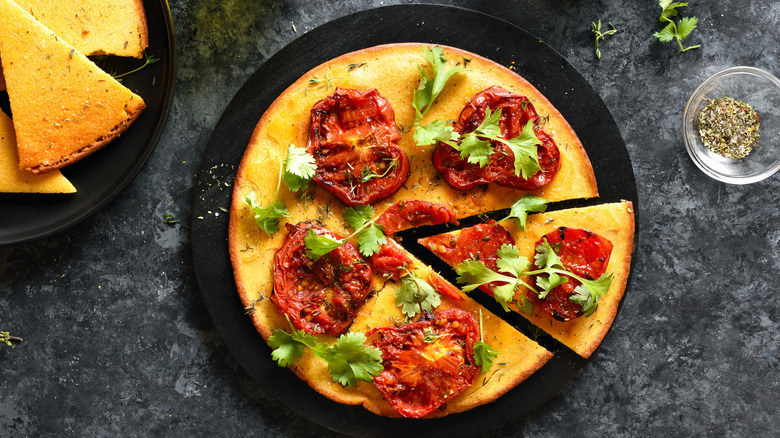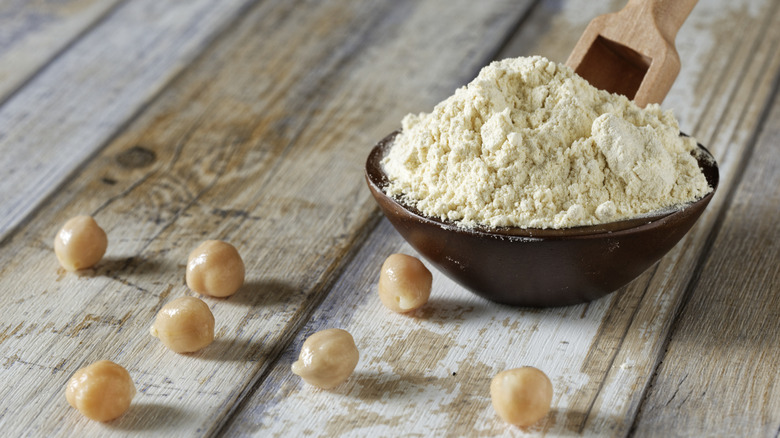Chickpea Crust Pizza Is The Protein-Packed Swap You Need To Try
A crust can make or break a pizza. Whether it's too soggy, too stiff, or too bland, a poorly-made crust can diminish the quality of a well-made pizza, even if it's got a legendary cheese pull. But it's not always the taste and texture of a crust that can disappoint. For some foodies, it's also the nutritional value of the crust that matters. The dough that forms a regular pizza crust is typically made with flour, yeast, salt, and oil. Although it's a timeless combination, flour-based pizza crust isn't exactly a superfood. To give your pizza crust a nutritional upgrade packed with protein — an essential macronutrient that sustains muscle, bone, and skin health — use a chickpea crust.
Chickpea crust is made with, you guessed it, chickpea flour instead of all-purpose flour. Made by finely grinding dried chickpeas, chickpea flour contains a cool 20 grams of protein per cup — that's 54% more protein than all-purpose flour. When studded with protein-dense toppings like sausage, pepperoni, or buffalo chicken, you can significantly boost a pizza's overall protein value and reach your recommended dietary allowance without defaulting to the same old grilled meats you've been begrudgingly eating for weeks. In addition to its impressive protein content, chickpea flour is gluten-free. Plus, chickpea flour is an abundant source of digestion-improving fiber and a slew of essential vitamins and minerals.
Tips for making a chickpea pizza crust
With its nutty, buttery, and pleasantly earthy flavor, building a pizza with chickpea crust isn't a total departure from regular all-purpose flour crusts. In fact, it can even add more depth of flavor to your pizza. And like regular crust, it browns and crisps up perfectly for a delicately charred bite. Of course, to achieve a well-made, protein-packed chickpea pizza crust, you'll want to keep a few tips in mind.
Although some supermarkets may sell ready-to-bake frozen chickpea crust, a homemade variety helps achieve that Nonna's kitchen feel. When assembling and combining the crust's dry ingredients, you'll need to include tapioca starch to give the gritty texture of chickpea flour a softer and smoother consistency with more chew. Chickpea flour, tapioca starch, salt, olive oil, and water are the bare essentials, but you can also introduce herbs and shredded cheese for more flavor, aroma, and richness. Baking a chickpea crust pizza in a cast iron skillet can give it that must-have crunch around its edge, but you can make it just as easily on a parchment paper-lined baking sheet.
Making a chickpea pizza crust isn't much different from making a regular crust. The primary difference is that the final result gives you more protein than a pizza made with all-purpose flour. And once you burn out on chickpea pizza, give chickpea pasta a spin.

